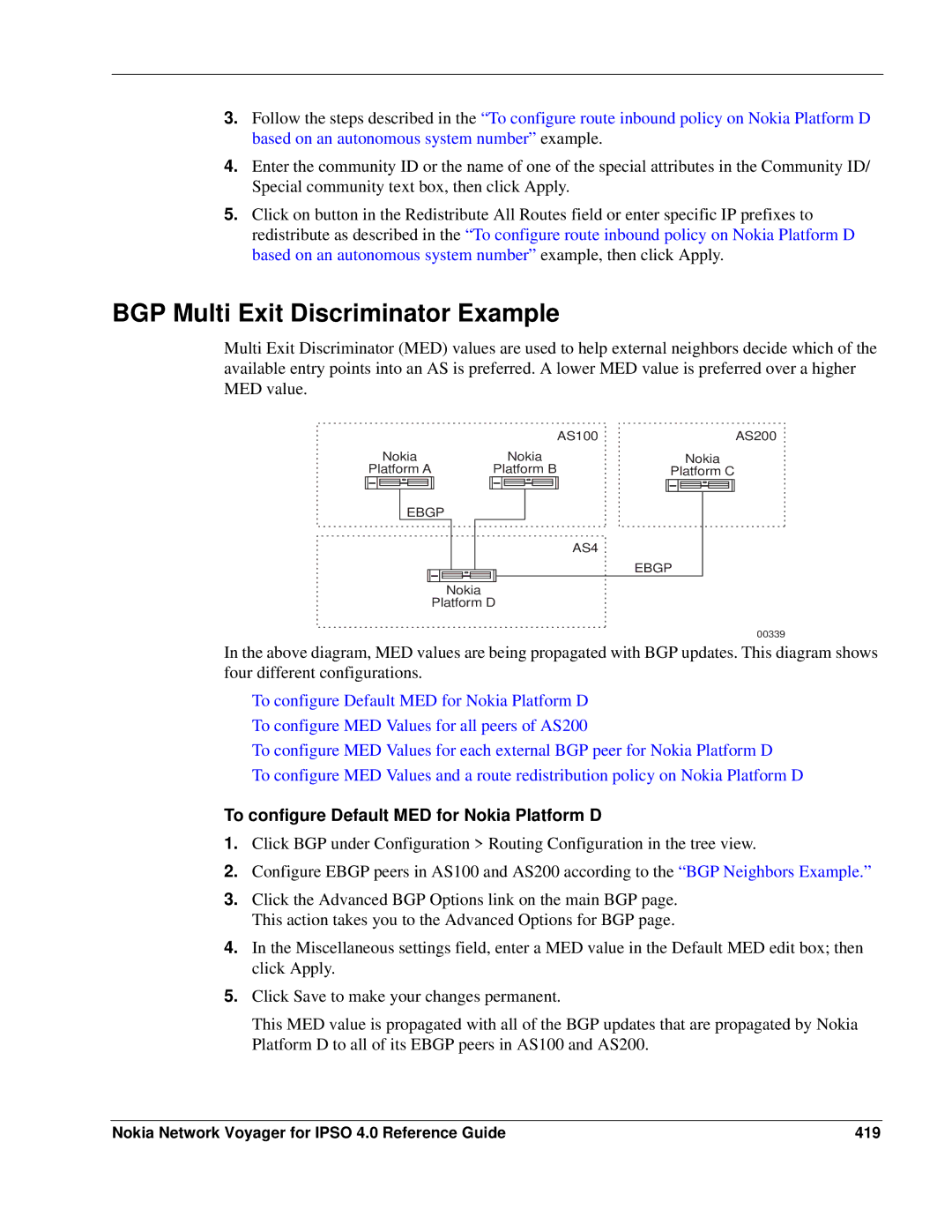
3.Follow the steps described in the “To configure route inbound policy on Nokia Platform D based on an autonomous system number” example.
4.Enter the community ID or the name of one of the special attributes in the Community ID/ Special community text box, then click Apply.
5.Click on button in the Redistribute All Routes field or enter specific IP prefixes to redistribute as described in the “To configure route inbound policy on Nokia Platform D based on an autonomous system number” example, then click Apply.
BGP Multi Exit Discriminator Example
Multi Exit Discriminator (MED) values are used to help external neighbors decide which of the available entry points into an AS is preferred. A lower MED value is preferred over a higher MED value.
| AS100 | AS200 |
Nokia | Nokia | Nokia |
Platform A | Platform B | Platform C |
EBGP |
|
|
| AS4 |
|
|
| EBGP |
Nokia
Platform D
00339
In the above diagram, MED values are being propagated with BGP updates. This diagram shows four different configurations.
To configure Default MED for Nokia Platform D
To configure MED Values for all peers of AS200
To configure MED Values for each external BGP peer for Nokia Platform D
To configure MED Values and a route redistribution policy on Nokia Platform D
To configure Default MED for Nokia Platform D
1.Click BGP under Configuration > Routing Configuration in the tree view.
2.Configure EBGP peers in AS100 and AS200 according to the “BGP Neighbors Example.”
3.Click the Advanced BGP Options link on the main BGP page. This action takes you to the Advanced Options for BGP page.
4.In the Miscellaneous settings field, enter a MED value in the Default MED edit box; then click Apply.
5.Click Save to make your changes permanent.
This MED value is propagated with all of the BGP updates that are propagated by Nokia Platform D to all of its EBGP peers in AS100 and AS200.
Nokia Network Voyager for IPSO 4.0 Reference Guide | 419 |
